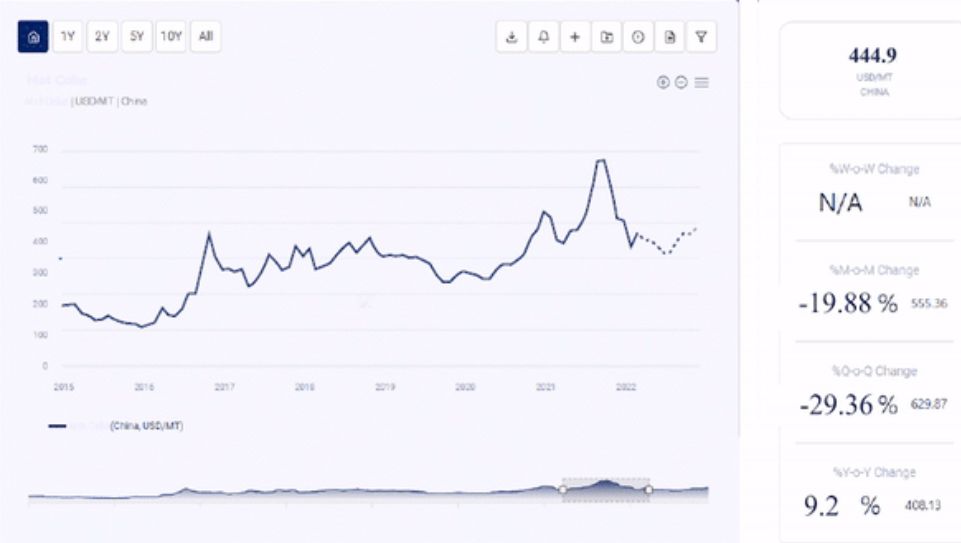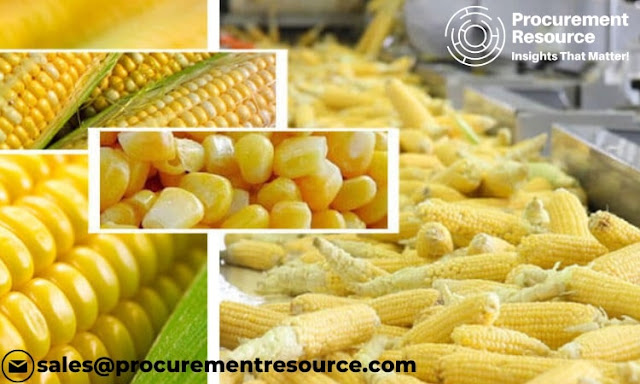Silver, a chemical element with the symbol Ag and atomic number 47, is a soft, white, glistening transition metal, demonstrating extremely high electrical and thermal conductivity and reflectivity of every metal. Silver is found in the pure and free rudimentary form called ‘native silver’ in the Earth’s crust. It is utilised as an alloy with gold and several other metals and in minerals like argentite and chlorargyrite. Nearly all silver is produced as a refining derivate of copper, gold, lead, and zinc. For a long time, silver has been considered a valuable metal and employed in several bullion coins and occasionally alongside gold.
Request for Real Time Silver Prices: https://www.procurementresource.com/resource-center/silver-price-trends/pricerequest
Mexico is the top silver-producing nation across the world, followed by China, Peru, Chile, Russia, Poland, and Australia.
Key Details About the Silver Price Trend:
Procurement Resource does an in-depth analysis of the price trend to bring forth the monthly, quarterly, half-yearly, and yearly information on the Silver price in its latest pricing dashboard. The detailed assessment deeply explores the facts about the product, price change over the weeks, months, and years, key players, industrial uses, and drivers propelling the market and price trends.
Each price record is linked to an easy-to-use graphing device dated back to 2014, which offers a series of functionalities; customization of price currencies and units and downloading of price information as excel files that can be used offline.
The Silver Price forecast, including India Silver price, USA Silver price, pricing database, and analysis can prove valuable for procurement managers, directors, and decision-makers to build up their strongly backed-up strategic insights to attain progress and profitability in the business.
Industrial Uses Impacting Silver Price Trend:
 There are several industrial uses for silver, accounting for over half of its annual global demand. This indicates that financial development can impact the silver price far more as compared to its impact on gold. Silver has been used in jewellery, tableware, and fine art for thousands of years due to its physical intensity, brilliance, flexibility, and elasticity. In addition, silver’s high conductive properties for electricity and heat and its sensitivity are used for light and anti-bacterial characteristics. Silver is considered a vital and irreplaceable metal for repairing and brazing alloys, producing batteries, dentistry, glass coatings, LED chips, medicines and nuclear reactors. It is also used for photography, photovoltaic or solar energy, RFID chips that help in tracking parcels or shipments around the world), semiconductors, touch screens, water purification, wood preservatives and other industrial uses.
There are several industrial uses for silver, accounting for over half of its annual global demand. This indicates that financial development can impact the silver price far more as compared to its impact on gold. Silver has been used in jewellery, tableware, and fine art for thousands of years due to its physical intensity, brilliance, flexibility, and elasticity. In addition, silver’s high conductive properties for electricity and heat and its sensitivity are used for light and anti-bacterial characteristics. Silver is considered a vital and irreplaceable metal for repairing and brazing alloys, producing batteries, dentistry, glass coatings, LED chips, medicines and nuclear reactors. It is also used for photography, photovoltaic or solar energy, RFID chips that help in tracking parcels or shipments around the world), semiconductors, touch screens, water purification, wood preservatives and other industrial uses.
Key Players:
- Umicore N.V
- American Elements
- MMC Norilsk Nickel PJSC
- Hindustan Zinc Limited
- Korea Zinc Co., Ltd.
- Yunnan Tin Group Company Limited (YTC)
- Polymetal International plc
- Pan American Silver Corporation
News & Recent Development:
- April 04, 23 – A mining royalty company, Vox Royalty Corp., has given a final development approval and resource upgrade to 323 million ounces of measured and designated silver equivalent resource, with a further 73 million ounces of inferred silver equivalent resource for the Bowdens “silver project” based in New South Wales, Australia.
About Us:
Procurement Resource offers in-depth research on product pricing and market insights for more than 500 chemicals, commodities, and utilities updated daily, weekly, monthly, and annually. It is a cost-effective, one-stop solution for all your market research requirements, irrespective of which part of the value chain you represent.
We have a team of highly experienced analysts who perform comprehensive research to deliver our clients the newest and most up-to-date market reports, cost models, price analysis, benchmarking, and category insights, which help in streamlining the procurement process for our clientele. Our team tracks the prices and production costs of a wide variety of goods and commodities, hence, providing you with the latest and consistent data.
To get real-time facts and insights to help our customers, we work with a varied range of procurement teams across industries. At Procurement Resource, we support our clients, with up-to-date and pioneering practices in the industry, to understand procurement methods, supply chain, and industry trends, so that they can build strategies to achieve maximum growth.
Contact Us:
Company Name: Procurement Resource
Contact Person: Christeen Johnson
Email: sales@procurementresource.com
Toll Free Number: USA & Canada – Phone no: +1 307 363 1045 | UK – Phone no: +44 7537 132103 | Asia-Pacific (APAC) – Phone no: +91 1203185500
Address: 30 North Gould Street, Sheridan, WY 82801, USA











